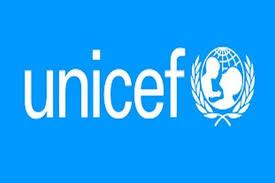Maternal Mortality: Women at Risk
Last May, Singari, a young mother, of Kharijhola village in Koraput district, Orissa, died just after giving birth to her son. The reason is the lack of access to basic health amenities. This is not an isolated case. Every second hour a woman dies due to pregnancy-related complications in Koraput. From the time of conception, death chases women like a shadow. The story of Singari is an imposing symbol of the high maternal mortality rate that grips India. While Orissa has the highest rate of maternal mortality rate in India, Koraput has one of the highest rates in the state. What exactly has been the missing link to achieve the target to reduce the maternal mortality rate even after it is one of the priorities in the government’s plan of action?
Six years ago leaders of the world put women high on the list of commitments they made in the Millennium Development Goals (MDGs), with one of the eight goals explicitly calling for better maternal health (Goal No. 5). Even, the United Nations Children's Fund (UNICEF) reiterated to world leaders subsequently to do more to prevent maternal mortality, one of the few measures of human progress to remain virtually unchanged since 1990. The UN Special Session on Children sponsored by UNICEF found that there was no progress achieved in this sphere so far!
Statistically, while a woman who gives birth in a developing country faces as high as a 1 in 13 chance of dying, in industrialized countries that risk falls to 1 in 4,100. It is estimated that 515,000 women die every year as a result of pregnancy and childbirth. More than 99 per cent of these deaths occur in the developing world. While these facts and figures seem quite alarming, the UNICEF reports show the variation in maternal mortality ratios between the developed and developing world, indicating that with proper attention and investment, woman's lives can be saved.
The most common fatal complication is post-partum haemorrhage. Sepsis, complications of unsafe abortion, prolonged or obstructed labour and the hypertensive disorders of pregnancy which can occur at any time during pregnancy and childbirth without forewarning, require prompt access to quality obstetric services equipped to provide lifesaving drugs, antibiotics and transfusions and to perform the caesarean sections and other surgical interventions to prevent deaths.
Studies in this regard indicate that women continue to die during pregnancy and childbirth mainly because of low social status and powerlessness which in turn limits their access to basic education and healthcare. For these reasons, their ability to pursue information that would empower them to make the best decisions on childbearing, health and nutrition remains compromised. A mother's death is especially harsh on her surviving children. A child's chance of survival drops dramatically when deprived of a mother's care.
In India, According to a UNICEF report, a woman dies every five minutes from pregnancy and childbirth-related complications. In spite of the efforts of the Union government in this regard in collaboration with the international organizations have not paid off well since there has not been a significant reduction over the past few years in the maternal mortality ratio (MMR) in the country which is as high as 540 maternity deaths per 1,00,000 births with Assam, Madhya Pradesh and Uttar Pradesh recording high death rate of 700 or more. The situation is equally worse in other states like Orissa, Rajasthan, West Bengal and Bihar.
Maternal deaths alone do not reveal the full scale of the tragedy. In fact, for every woman who dies from complications related to childbirth, approximately 30 more suffer injuries, infections, and disabilities which are usually untreated and unspoken of. An estimated 300 million women today - or a quarter of the women in the developing world - have sustained problems in pregnancy and childbirth that have profoundly affected their lives.
The single most effective way to reduce maternal deaths is to provide provision of emergency obstetric care, says UNICEF. To what extent governments are intensifying activities to provide emergency obstetric care is still in question. However, to make a difference in the foreseeable years, affecting countries should take certain measures to restrict the MMR. Starting from the grassroots, the concerned administration has to provide training about essential emergency obstetric care and lifesaving skills to village midwives, community health centre midwives and paramedics who are likely to attend births. To recognize the danger signs of the pregnancy, educating the community to understand the risks and danger signs of pregnancy and delivery, and mobilizing them to obtain appropriate care quickly, is the essential second step. Thirdly, there has to be a transport system for prompt transfer of women with obstetric emergencies in rural areas. This has been successfully implemented in some parts of Rajasthan and can be followed elsewhere. Last but not the least, the spouse could be allowed to see through the childbirth process which could make them realize the difficulties and the pain involved. A platform for public hearings on safe motherhood in collaboration with active non-governmental bodies or the state women’s commission, which already found success in some parts, needs to focus on a more participatory approach.
Even if we forget the number game the situation on the ground itself calls for immediate attention. If we are not doing anything to protect the lives of infants and mothers then indirectly we are restricting human progress. With the new millennium characterized by such unprecedented industrial and technological breakthroughs, it is indeed an irony that we allow so many women to die such easily which could have been preventable otherwise.
